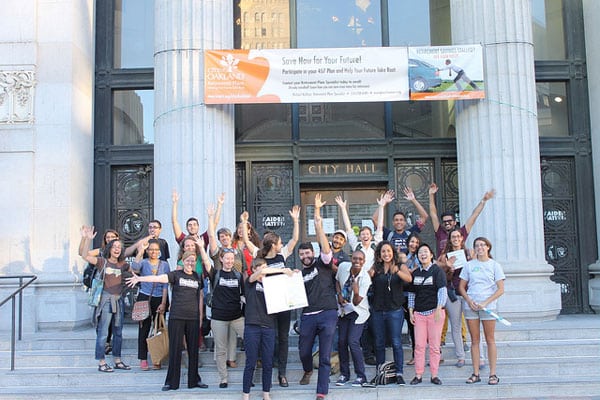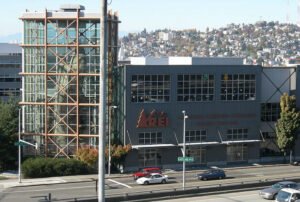
September 11, 2018; Next City
“Baby Boomers own the majority of small businesses,” notes Oscar Perry Abello in Next City, “but only 17 percent of them have a formal exit plan for when they want to retire.” As NPQ has noted, employee ownership is increasingly considered a way to preserve jobs and businesses as owners retire. An estimated 24.7 million people work for boomer-owned companies, so this is hardly a small portion of our economy.
Typically, when US businesses think of employee ownership, the form that ownership takes is an employee stock ownership plan (ESOP) company. The most up-to-date data (from 2015) finds that 10.8 million Americans work at an estimated 6,669 companies in which an ESOP owns all or part of the company. Because an ESOP is a federally regulated pension plan, there are costs involved. For smaller companies, especially companies with fewer than 20 employees, a worker cooperative, which is directly owned by workers and is not a pension plan, is likely to be a more cost-effective way for workers to purchase the company from the owners.
Of course, there are other reasons to use a worker cooperative other than costs, including the fact that workers can self-manage more of their own affairs. As Abello notes, “In a worker cooperative, in addition to sharing ownership, workers share collective responsibility in managing the business, often using the principle of ‘one worker, one vote’ to govern decisions like hiring management or delegating management responsibilities to each other.”
A new report published this week, titled Co-op Conversions at Scale, co-published by Capital Impact Partners [Capital Impact], a community development financial institution (CDFI), and Citi Community Development and authored by the ICA Group, a nonprofit employee ownership technical assistance (TA) provider, explores the opportunity for converting businesses that employ 20 to 100 people into worker cooperatives. These businesses are large enough so that ESOPs are possible, but small enough that many will fail to attract ESOP consultants. As a result, many businesses that could stay open instead close their doors. And this means a gap exists that nonprofit technical assistance providers and CDFIs like Capital Impact might fill.
The timing is also good. US worker cooperatives are clearly on the rise. The nonprofit Democracy at Work Institute, for example, has seen an increase in “the number of firms initiating a conversion process with a TA provider increased from 16 to 2014 to 74 in 2016 and reached 189 by year-end 2017.”
To determine market demand, the report examines five industries in five regions. The industries selected were childcare, home healthcare, nursing care, grocery stores, and food manufacturing. Regions selected were New England, greater New York City, the mid-Atlantic (Philadelphia to DC), Chicago, and California (focused on the San Francisco Bay Area and Los Angeles).
Sign up for our free newsletters
Subscribe to NPQ's newsletters to have our top stories delivered directly to your inbox.
By signing up, you agree to our privacy policy and terms of use, and to receive messages from NPQ and our partners.
The industries selected are those that employ people of color in low-wage industries, as the conversions are part of a broader strategy to close the racial wealth gap and convert wage ghettoes into living-wage industries. Regions selected were ones where peer and technical support networks for worker co-ops are already prevalent.
One final screen was longevity: Businesses with 25 years of operations tend to be solid and thus are good candidates for worker buyouts. Overall, among the businesses examined, the study found that between 1997 and 2013, in an average year, 159 of these businesses were sold or closed and 5,724 jobs lost [numbers below add up slightly differently due to rounding].
Regionally, these annual averages are:
| Businesses closed | Businesses sold | Lost jobs | |
| New England | 23 | 19 | 1,528 |
| New York metro | 20 | 18 | 1,242 |
| Mid-Atlantic | 12 | 13 | 855 |
| Chicago metro | 8 | 10 | 708 |
| California | 17 | 20 | 1,392 |
Stopping 80 closures a year might be unlikely, but the report suggests that, “At a median estimated value of $777,000 per firm, facilitating the transfer of 30 firms per year will require $23 million in capital.” If 30 firms a year are converted in this way, that would mean over 1,000 new worker co-op jobs would be added every year, a sizable increase given that currently worker co-ops employ an estimated 7,000 people nationally.
Of course, $23 million is a considerable sum, but it is doable. As of year-end 2017, Capital Impact reported having over $300 million in outstanding loans. Abello notes that the CDFI is also part of “an informal group that includes smaller community development lenders that support worker cooperatives, including Cooperative Fund of New England, Local Enterprise Assistance Fund, Shared Capital Cooperative and The Working World.”
The study’s findings, explains Alison Powers, a program officer at Capital Impact, are encouraging. “We knew instinctively that there had to be [demand for worker co-op conversions]…but there really hadn’t been a lot of data out there with this segmentation.” Powers added that for her, the “a-ha moment” was seeing the large number of longstanding healthy businesses that nonetheless closed. “That hit me over the head as an immediate crisis.”
Loans help, but Abello cautions that “workers will still have to come up with at least a small down payment.” The new federal employee ownership law also makes loans cheaper, but finding ways to help workers buy their shares will still need to be part of the equation.—Steve Dubb











